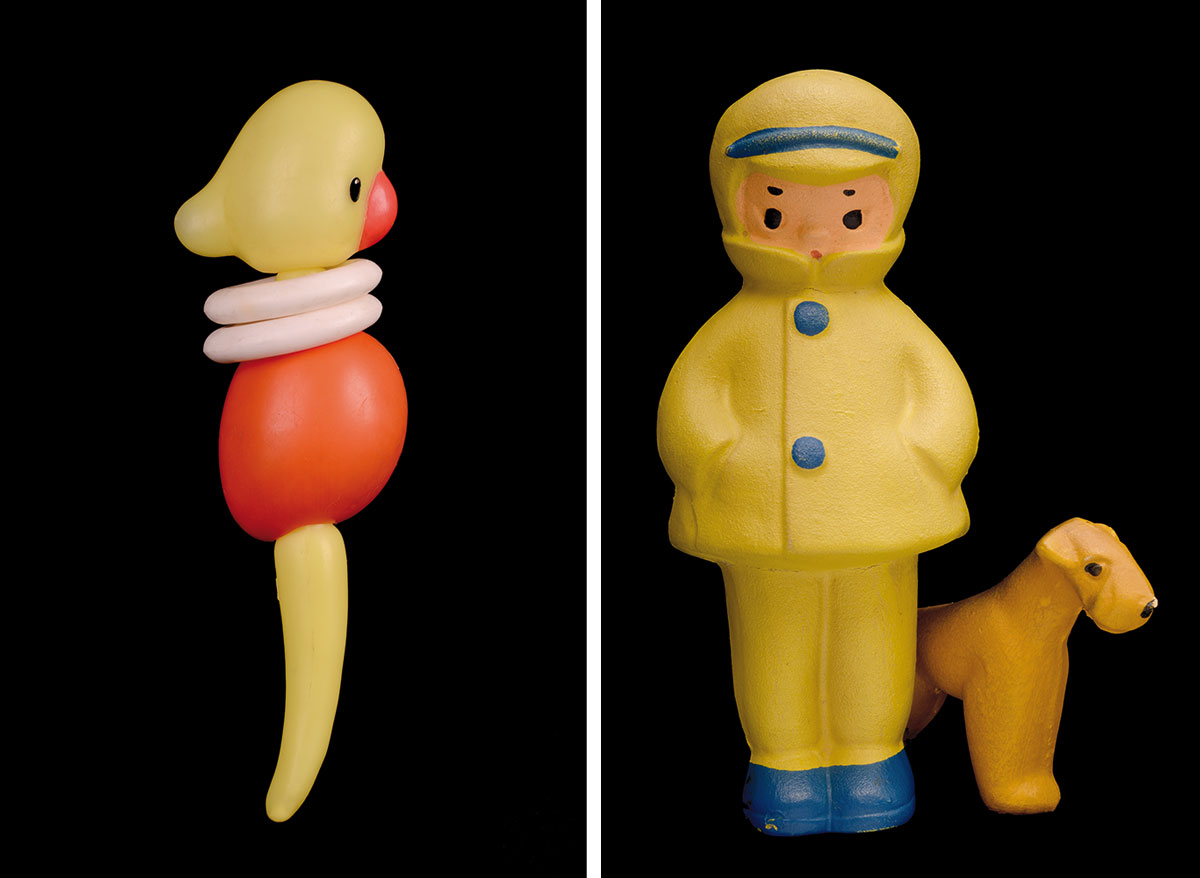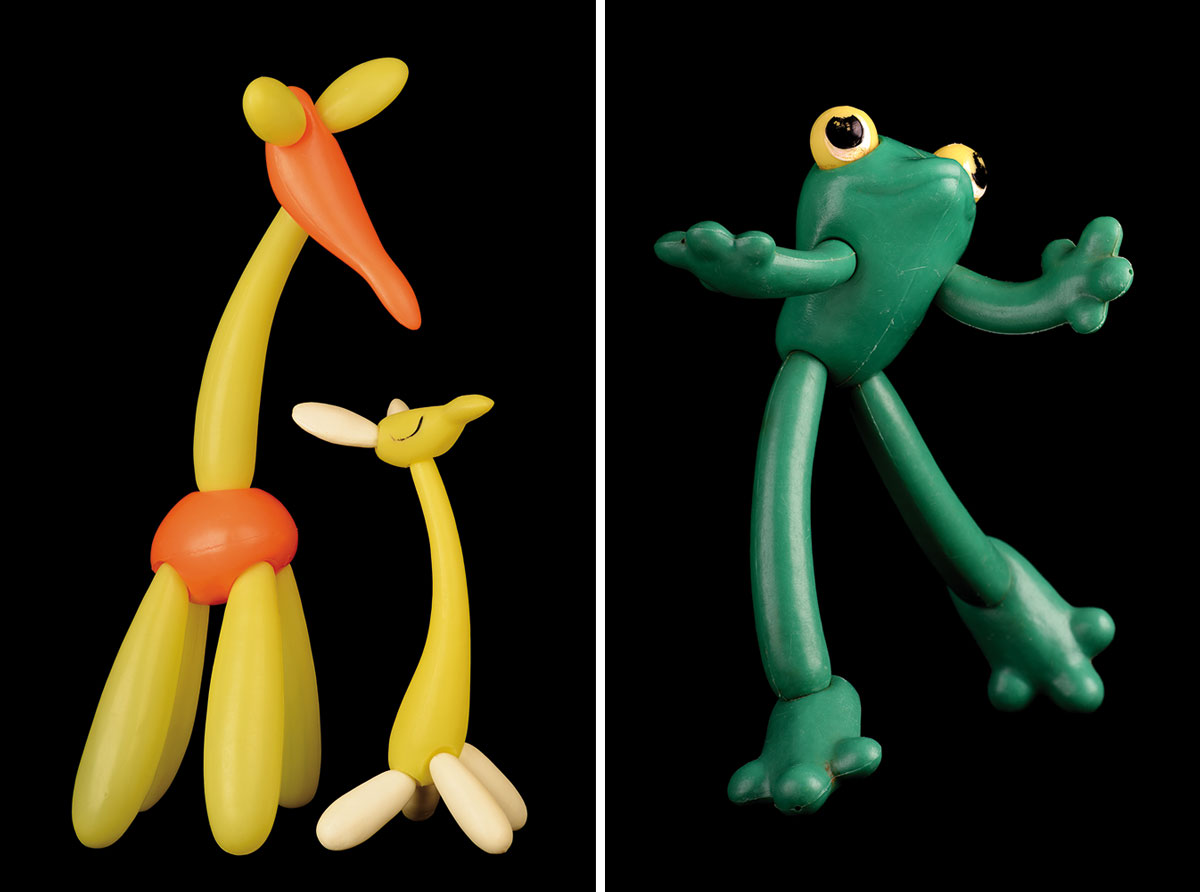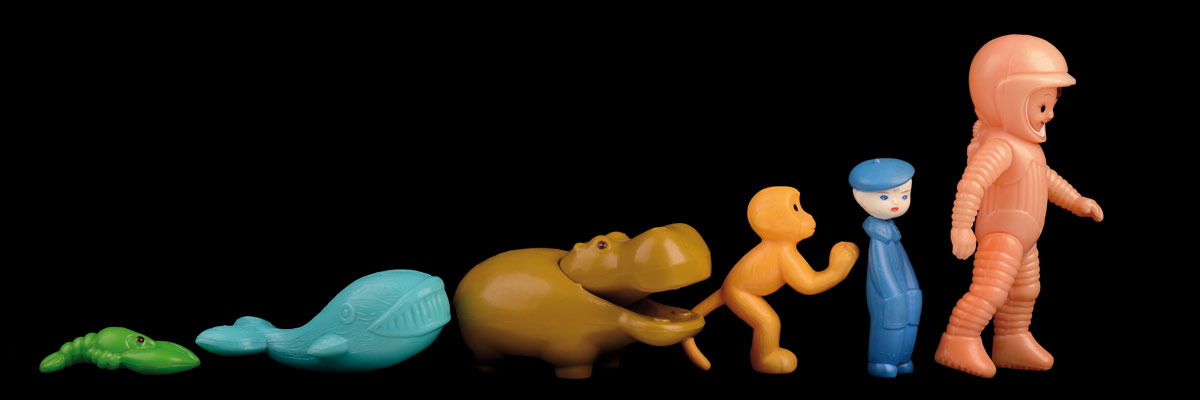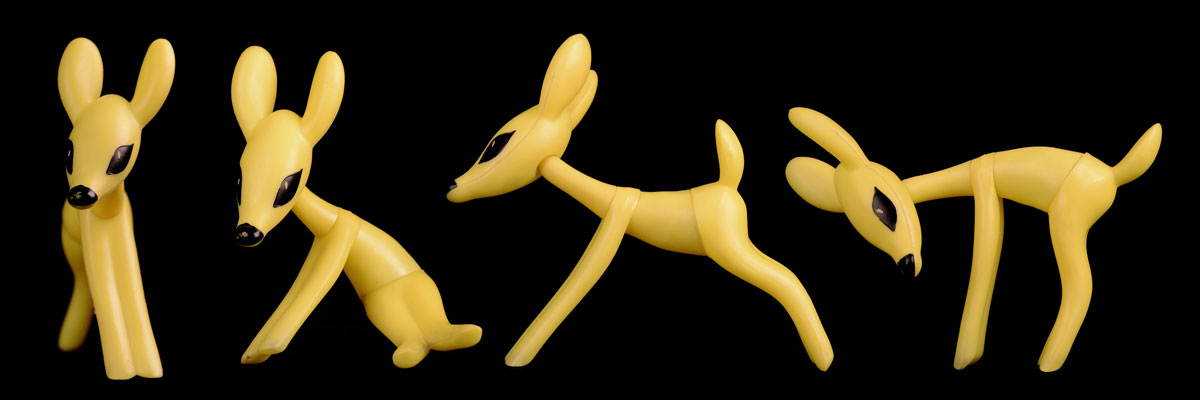ART CITIES:Berlin-ZOO MOCKBA
 During the Tsarist era, Russia had no toy industry of its own. Those who could afford it spoiled their children with dolls and toys from Germany and France; everyone else made do with handmade pieces carved from wood or sculpted from clay. Such objects reflected a traditional folk art aesthetic that in many ways still characterises the broader perception of Russian toys and Russian culture in general.
During the Tsarist era, Russia had no toy industry of its own. Those who could afford it spoiled their children with dolls and toys from Germany and France; everyone else made do with handmade pieces carved from wood or sculpted from clay. Such objects reflected a traditional folk art aesthetic that in many ways still characterises the broader perception of Russian toys and Russian culture in general.
By Efi Michalarou
Photo: me Collectors Room Berlin Archive
The exhibition “ZOO MOCKBA – Toy Animals from the Soviet Union” presents an exemplary selection of original toys produced between 1950 and 1980 in The Union of Soviet Socialist Republics (USSR). Approximately 100 figures by eleven artists, all sourced from the Köpcke & Weinhold Collection, are on view in the lounge of me Collectors Room. Immediately after the October 1917 revolution, the fighting on the front, and then selflessly restoring the destroyed economy, there were not, and could not be companies that produced such products. It is no coincidence one of the first government regulations partially permitted free trade in toys, among other handicrafts. In the 1920s and even the 30s in different parts of the USSR, especially in the provinces, the most common and affordable remained homemade toy. It was made for and by the children themselves, as well as single artisans, selling their simple goods in the markets and fairs. Living in the distant cities and villages, they kept folk art features in their handmade products In the 1930s, when the Soviet Union’s first industrially manufactured toys first rolled off the assembly line, designs began mirroring aspects of international models. After World War II, toy production was not a top priority; nevertheless, companies were encouraged to continue producing toys in addition to essential goods. In the early 1950s, graduates of the Leningrad Art Academy began venturing into the modern age. In the Soviet toy industry, artists were given the creative freedom to experiment and, unlike in other “more serious” state-controlled areas of artistic production, develop their own formal language in which they could confidently express the zeitgeist and a new, postwar spirit. Even though some of these artists no longer like to discuss the fact that they once designed industrial toys, a strong avant-garde influence can be found in their creations even at this early stage. Many of these colorful figures count as art for kids, sculptures made of plastic that nonetheless reflect a cultural heritage steeped in tradition. Using synthetic materials such as celluloid and polyethylene, the toy designers of the Soviet Union brought to life a species-rich animal kingdom that boasted an unprecedented degree of colorful diversity. These inexpensive industrial products often spoke to a sophisticated creative drive that remains influential to this day. The exhibition “ZOO MOCKBA” presents an outstanding selection of these pieces. In addition to toys manufactured from celluloid, polyethylene, and rubber, handmade design models are also be on view. Many of the toys can be attributed to specific artists, among them: Natalia Tyrkowa, Boris Worobjew, Lew Razumowsky, Lew Smorgon, Adolf Neystat, Galina Sokolowa, Tamara Fedorowa, Anatoli Borisow, and the Czech designer Libuse Niklova. In addition to the objects the exhibition include large-format photographs of individual toys and groups of figures that highlight the unique artistic qualities of these industrial products.
Info: me Collectors Room Berlin / Olbricht Foundation, Auguststrasse 68, Berlin, Duration: 15/2-22/4/19, Days & Hours: Wed-Mon 12:00-18:00, www.me-berlin.com




